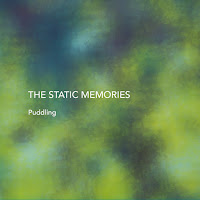Phil Durrant
Sowari Modular
UK Linear Obsessional LinOb LOR097 CD/DL (2019)
The highly respected improvisor Phil Durrant forks over fertile new ground with this release. Whether it be composition, his involvement in New London Silence with Angharad Davies, Rhodri Davies and Mark Wastell as a violinist; his solo or collaborative work with modular synthesisers or more recently exploratory mandolin in a duo with guitarist Martin Vishnick and others, Durrant has an enviable reputation. Sowari Modular is Durrant solo and in inquisitive mood, perhaps due to Linear Obsessional head Richard Sanderson’s policy of open-mindedness and regard for his artists’ freedom to choose whatever they wish to submit to his imprint. To my mind, Sanderson’s approach produces wildly varied - but always excellent - output. Sowari Modular is no different. Named in reference to Durrant’s trio with Burkhard Beins and Bertrand Denzler, Trio Sowari - or perhaps, more literally, his role within it -
“ 'Sowari Modular' features tracks using either modular synth assemblages or tracks made with single semi-modular synthesisers. Ranging from enveloping drone pieces influenced by Eliane Radique through to more "gestural" pieces incorporating outside sounds such as electric motors and wine glasses, the album is a blueprint of singular patches and hairtrigger fluctuations - a very physical music from a very arcane source.”
according to the label’s marketing.
Opening track “Survey” is an exploration of imaginary terrain. Terror and terroir. Tramlines. Moving tones. Motorways. “Misty” bounces along like a monster-fied mutant Pong video-game.
“Zero Coast” is thick with analogue synthesis and is more aggressive, you might say. Analogue synths seem to be often in control of their owners rather than the other way around and I wonder if this might be the case here; Durrant locked in a battle of will with the angry filters and oscillators. “Sweep” is longer at 11 minutes and more meditative and explores the less audible ends of the frequency spectrum before generating a tone reminiscent of Tuvan throat-singing with occasional crystalline pitch shifting effects.
“Radio Gag” gets staticky - kind of like what you might hear from a pocket short wave radio if you were Jeff Bridges in Tron. “From Another” sounds like something I imagine you might hear drifting out of an open window as you stroll past the IRCAM building on a summer afternoon. “Field” utilises a simple machine rhythm as a base on which to build seemingly random, autonomous sound events. Erosion quickly sets in and like the sands from a south coast beach, the noises and little sequences find themselves drifting off and settling in places far away from where they started. No electronic groynes have yet been provided. At fifteen minutes, “Still” is the longest piece on Sowari Modular. Typical perhaps of Durrant’s occasional interest in a drone-based approach, it is made up of small, gentle modulations and developments; a well-chosen handful of shimmering fragments introduced slowly and then left to fend for themselves.
The portrait of Phil on the sleeve is by painter/bassist Kev Hopper, (he of Stump, Ticklish and Prescott), who also releases his own music on this excellent South London imprint.
Trio Sowari
Third Issue
AUSTRIA Mikroton CD 67 CD/DL (2018)
Following on from 2005’s Three Dances and 2008’s ShortCut both released by Potlatch, their third release - this time on Mikroton; one of my current favourite imprints - finds Phil Durrant on modular and software synthesisers, Burkhard Beins on percussion and objects and Bertrand Denzler on tenor saxophone. On the back of the cover is a photograph of a neatly cut stack of firewood and kindling against a stone wall. Someone’s ready for winter. Within, you will find four pieces of music with great one-word titles; “Gravitation”, “Suspension”, “Exploration” and “Levitation”. That last one probably not referencing Terry Bickers and Bic Hayes’ 90s prog-rock band, but hey, who knows? Eclectic tastes never hurt nobody. All three players are known for their considered approach to their relative instrumentation, so I was very excited to receive this disc.
A hum, initially seemingly simple, but opening up incrementally. Swept metal; poise. A gentle increase of intensity, like a slight but noticeable change in air pressure.
Low drone to start; joined by a horn tone almost like a human voice, opening out into a recognisable sax. Nice combinations of beat frequencies, overtones, harmonics and sine waves. A distant drum?
More percussion-led. Bells, chimes, struck metal… There is some bass information, fleetingly.
With the use of their fairly orthodox use of bowed cymbals, saxophone and tone generation, we could almost be listening to a free jazz unit of which there are many youthful examples around at the moment. Trio Sowari are not so predictable however, and things soon take a turn for the oblique. The musicians carefully develop their material into a group dynamic so restrained and in harmony with itself, it could be the musician’s metabolisms we’re listening to.
What is unusual about this clutch of recordings however, is the way they seem to bend time. “Gravitation” is nearly fifteen minutes long and “Suspension” is twelve, but they seem to pass by in an instant due to the density of the actions and the deep levels of unspoken communication between the players, I think. These recordings were made over two days which suggests to me that the group were prepared in advance for a short and intensive burst of activity.
Recorded by Patrick Robalewski at Sudstern Studios, Berlin, July 2016. Mixed and edited by Burkhard Beins. Mastered by Werner Dafeldecker. Seek it out.















